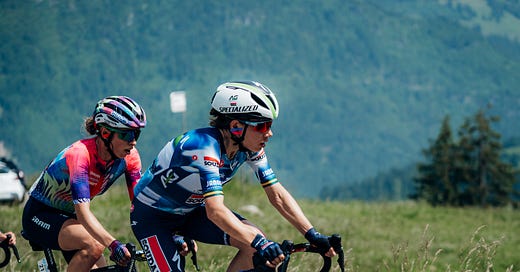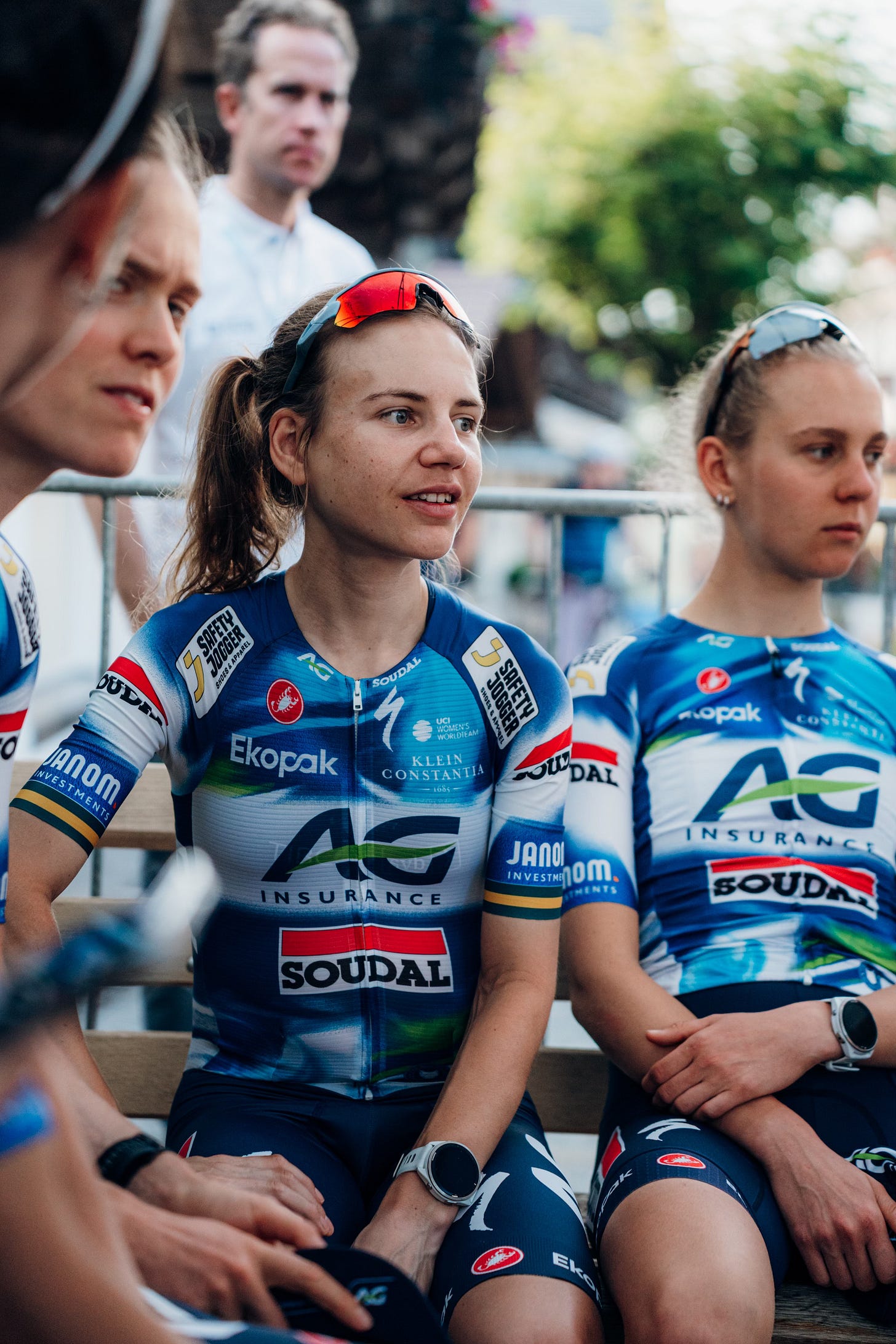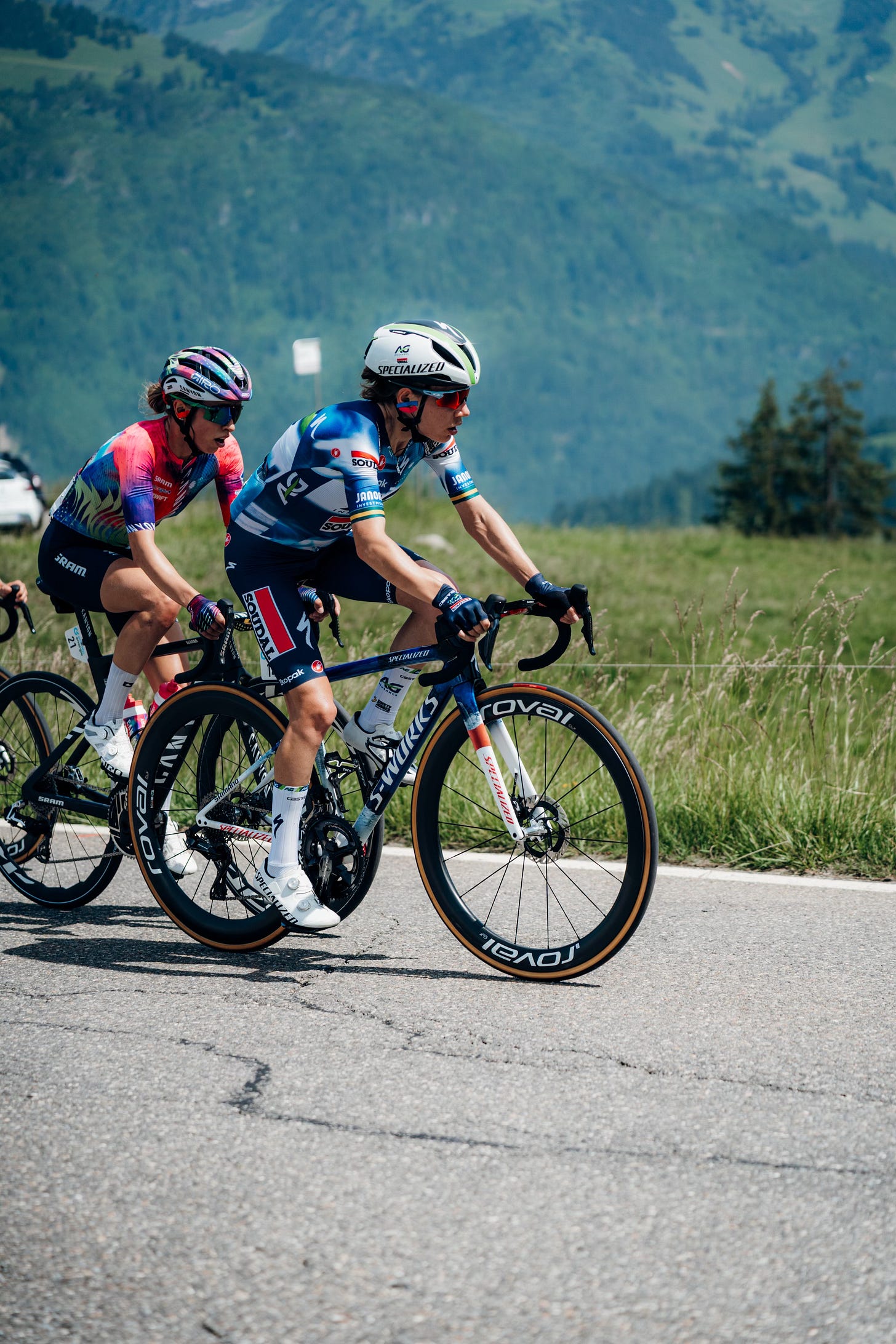'Physically she's world-class': Gigante readies for Giro after long injury lay-off
"There’s a difference in a good start and having almost a win on your first day," says AG Insurance-Soudal sports director Stijn Steels.
Sarah Gigante’s drive to get back into racing at the highest level of competition is tangible.
The 24-year-old could be forgiven for wanting to ease into a delayed 2025 campaign after undergoing surgery to correct iliac artery endofibrosis, which sidelined her for some seven months.
However, neither a dodgy phone line nor the rigours of the Tour de Suisse, which made even Demi Vollering’s eyes spin, is enough to subdue Gigante (AG Insurance-Soudal), who insists she isn’t rebuilding, but rather rebuilt and raring to race.
The former national time trial champion normally starts her campaign in Australia every season but was unable to defend her title with AG Insurance-Soudal at the Tour of Down Under in January, instead undergoing a procedure to unkink and shorten a major artery, ensuring blood flow to her right leg.
Gigante had put symptoms including numbness and reduced power down to circumstance, until even recovery rides in the early pre-season toward the end of last year caused so much pain, she realised there was a problem.
“Over a couple of years, I lost more and more power on my time trial bike and in the seat, trying to do efforts seated, but I didn’t realise there was a real problem until I started getting, in hindsight, the numbness,” Gigante says.
“The first time in the Tour de France and then at Worlds my leg was quite numb, but it only came when I was going so hard and you’re in a lot of pain anyway, so I just ignored it. And at Worlds it was so cold, so I just thought my leg was numb because I was cold. But then when I went home to Australia I tried to start training again after my off-season, and trained inside for a month before the surgery. I could ride inside at 50RPM out of the seat for a couple of hours. That was the only training I could do. It just got worse and worse. It felt like burning in my whole quad – like was on fire.”
Gigante by her own admission lived at the Victorian Institute of Sport where a specialist team worked on her diagnosis, recovery and rehab that were at times as arduous as the intricate surgery that prevented her from bending over for two weeks and required 12-16 weeks completely off the bike.
“It involves cutting right down to the artery, clearing it out, unkinking it, in my case shortening it as well,” Gigante recalls of the surgery. “It’s quite dangerous surgery, so lots of time off any exercise at all after that.”
Gigante doesn’t sound like the type of person accustomed to being idle, and her recent return to racing in Europe has reflected that. She opened her campaign at the Tour of Norway last month, finishing third on stage one, and at the ensuing Tour de Suisse marked a stint in the Queen of the Mountain jersey while assisting teammate Urska Zigart to fifth place on general classification.
“She was immediately at level during both races,” AG Insurance-Soudal sports director Stijn Steels tells Spokes. “We knew she trained really hard to come back and had confidence she would start with a good race, but of course there’s a difference in a good start and having almost a win on your first day.
“In Norway it was clear the second day that she lacked a bit the toughness of multiple race days, but now in Suisse she showed the last day she's 100 per cent again.”
No longer or in pain, or lacking power, Gigante has set her sights on the horizon, specifically the Giro d’Italia, which she is set to start next month.
“I don’t feel like I need a year to rebuild, I’ve done that,” she says. “Definitely a bit frustrating to feel strong and then not race exactly how I’d love to race, but then on the other hand I can take a lot of confidence from my form. I’m definitely stronger than I expected.”

Gigante at the Tour de Suisse noted that her descending needed some practice after the long lay-off and stints of indoor training. However, Steels is confident that the Australian will in time make her mark.
“It's clear Sarah has still a lot of progression ahead of her. Physically she's already world-class, but it's more having her race ready and try to improve her racing skills a bit,” he says.
“As a born climber, Sarah will of course participate in most stage races. First is the Giro on her program, with as another goal for the team to have a good result. Tactics depend of course a bit on the situation in GC. We know Sarah is a world-class climber, so on mountain-top finishes she will mostly get her shot for a result. But in stage races we also look at the GC itself and if we have another climber closer in GC she will be more useful as a luxe-domestique, like she did for Urska in Suisse.”






